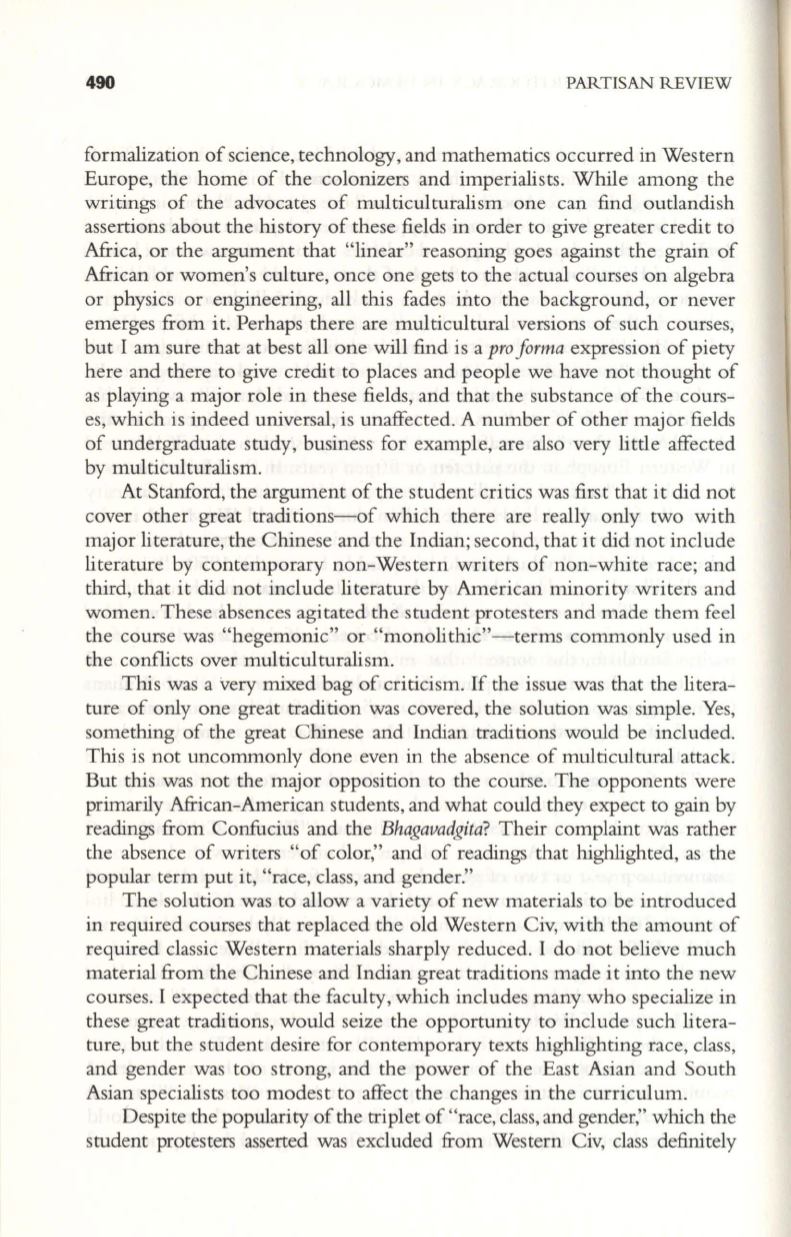
490
PARTISAN REVIEW
formalization of science, technology, and mathematics occurred in Wes tern
Europe, the home of the colonizers and imperialists. While among the
writings of the advocates of multiculturalism one can find outlandish
assertions about the history of these fields in order to give greater credit to
Africa, or the argument that "linear" reasoning goes against the grain of
African or women's culture, once one gets to the actual courses on algebra
or physics or engineering, all this fades into the background, or never
emerges from it. Perhaps there are multicultural versions of such courses,
but I am sure that at best all one will find is a
pro forma
expression of piety
here and there to give credit to places and people we have not thought of
as playing a major role in these fields, and that the substance of the cours–
es, which is indeed universal, is unaffected. A number of other major fields
of undergraduate study, business for example, are also very little affected
by multiculturalism.
At Stanford, the argument of the student critics was first that it did not
cover other great traditions-of which there are really only two with
major literature, the Chinese and the Indian; second, that it did not include
literature by contemporary non-Western writers of non-white race; and
third, that it did not include literature by American minority writers and
women. These absences agitated the student protesters and made them feel
the course was "hegemonic" or "monolithic"-terms commonly used in
the conflicts over multiculturalism.
This was a very mixed bag of criticism. If the issue was that the litera–
ture of only one great tradition was covered, the solution was simple. Yes,
something of the great Chinese and Indian traditions would be included.
This is not uncommonly done even in the absence of multicultural attack.
But this was not the major opposition to the course. The opponents were
primarily African-American students, and what could they expect to gain by
readings from Confucius and the
Bhagavadgita?
Their complaint was rather
the absence of writers "of color," and of readings that highlighted, as the
popular term put it, "race, class, and gender."
The solution was to allow a variety of new materials to be introduced
in required courses that replaced the old Western Civ, with the amount of
required classic Western materials sharply reduced. I do not believe much
material from the Chinese and Indian great traditions made it into the new
courses. I expected that the faculty, which includes many who specialize in
these great traditions, would seize the opportunity to include such litera–
ture, but the student desire for contemporary texts highlighting race, class,
and gender was too strong, and the power of the East Asian and South
Asian specialists too modest to affect the changes in the curriculum.
Despite the popularity of the triplet of "race, class, and gender," which the
student protesters asserted was excluded from Western Civ, class definitely


